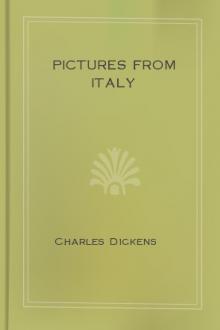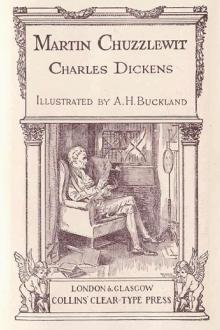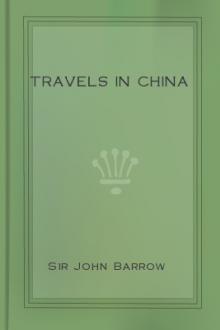Travels Through France And Italy by Tobias Smollett (beautiful books to read .txt) 📖

- Author: Tobias Smollett
Book online «Travels Through France And Italy by Tobias Smollett (beautiful books to read .txt) 📖». Author Tobias Smollett
Information Or Assistance; And I Am Strangely Puzzled By The
Barbarous Names They Give To Many Different Species, The
Descriptions Of Which I Have Read Under Other Appelations; And
Which, As I Have Never Seen Them Before, I Cannot Pretend To
Distinguish By The Eye. You Must Therefore Be Contented With Such
Imperfect Intelligence As My Opportunities Can Afford.
The Useful Arts Practised At Nice, Are These, Gardening And
Agriculture, With Their Consequences, The Making Of Wine, Oil,
And Cordage; The Rearing Of Silk-Worms, With The Subsequent
Management And Manufacture Of That Production; And The Fishing,
Which I Have Already Described.
Nothing Can Be More Unpromising Than The Natural Soil Of This
Territory, Except In A Very Few Narrow Bottoms, Where There Is A
Stiff Clay, Which When Carefully Watered, Yields Tolerable
Pasturage. In Every Other Part, The Soil Consists Of A Light Sand
Mingled With Pebbles, Which Serves Well Enough For The Culture Of
Vines And Olives: But The Ground Laid Out For Kitchen Herbs, As
Well As For Other Fruit Must Be Manured With Great Care And
Attention. They Have No Black Cattle To Afford Such Compost As
Our Farmers Use In England. The Dung Of Mules And Asses, Which
Are Their Only Beasts Of Burthen, Is Of Very Little Value For
This Purpose; And The Natural Sterility Of Their Ground Requires
Something Highly Impregnated With Nitre And Volatile Salts. They
Have Recourse Therefore To Pigeons' Dung And Ordure, Which Fully
Answer Their Expectations. Every Peasant Opens, At One Corner Of
His Wall, A Public House Of Office For The Reception Of
Passengers; And In The Town Of Nice, Every Tenement Is Provided
With One Of These Receptacles, The Contents Of Which Are
Carefully Preserved For Sale. The Peasant Comes With His Asses
And Casks To Carry It Off Before Day, And Pays For It According
To Its Quality, Which He Examines And Investigates, By The Taste
And Flavour. The Jakes Of A Protestant Family, Who Eat Gras Every
Day, Bears A Much Higher Price Than The Privy Of A Good Catholic
Who Lives Maigre One Half Of The Year. The Vaults Belonging To The
Convent Of Minims Are Not Worth Emptying.
The Ground Here Is Not Delved With Spades As In England, But
Laboured With A Broad, Sharp Hough, Having A Short Horizontal
Handle; And The Climate Is So Hot And Dry In The Summer, That The
Part 7 Letter 22 (Nice, November 10, 1764.) Pg 190Plants Must Be Watered Every Morning And Evening, Especially
Where It Is Not Shaded By Trees. It Is Surprising To See How The
Productions Of The Earth Are Crouded Together. One Would Imagine
They Would Rob One Another Of Nourishment; And Moreover Be
Stifled For Want Of Air; And Doubtless This Is In Some Measure
The Case. Olive And Other Fruit Trees Are Planted In Rows Very
Close To Each Other. These Are Connected By Vines, And The
Interstices, Between The Rows, Are Filled With Corn. The Gardens
That Supply The Town With Sallad And Pot-Herbs, Lye All On The
Side Of Provence, By The Highway. They Are Surrounded With High
Stone-Walls, Or Ditches, Planted With A Kind Of Cane Or Large
Reed, Which Answers Many Purposes In This Country. The Leaves Of
It Afford Sustenance To The Asses, And The Canes Not Only Serve
As Fences To The Inclosures; But Are Used To Prop The Vines And
Pease, And To Build Habitations For The Silkworms: They Are
Formed Into Arbours, And Wore As Walking-Staves. All These
Gardens Are Watered By Little Rills That Come From The Mountains,
Particularly, By The Small Branches Of The Two Sources Which I
Have Described In A Former Letter, As Issuing From The Two Sides
Of A Mountain, Under The Names Of Fontaine De Muraille, And
Fontaine Du Temple.
In The Neighbourhood Of Nice, They Raise A Considerable Quantity
Of Hemp, The Largest And Strongest I Ever Saw. Part Of This, When
Dressed, Is Exported To Other Countries; And Part Is Manufactured
Into Cordage. However Profitable It May Be To The Grower, It Is
Certainly A Great Nuisance In The Summer. When Taken Out Of The
Pits, Where It Has Been Put To Rot, The Stench It Raises Is Quite
Insupportable; And Must Undoubtedly Be Unwholesome.
There Is Such A Want Of Land In This Neighbourhood, That Terraces
Are Built Over One Another With Loose Stones, On The Faces Of
Bare Rocks, And These Being Covered With Earth And Manured, Are
Planted With Olives, Vines, And Corn. The Same Shift Was
Practised All Over Palestine, Which Was Rocky And Barren, And
Much More Populous Than The County Of Nice.
Notwithstanding The Small Extent Of This Territory, There Are
Some Pleasant Meadows In The Skirts Of Nice, That Produce
Excellent Clover; And The Corn Which Is Sown In Open Fields,
Where It Has The Full Benefit Of The Soil, Sun, And Air, Grows To
A Surprizing Height. I Have Seen Rye Seven Or Eight Feet High.
All Vegetables Have A Wonderful Growth In This Climate. Besides
Wheat, Rye, Barley, And Oats, This Country Produces A Good Deal
Of Meliga, Or Turkish Wheat, Which Is What We Call Indian Corn. I
Have, In A Former Letter, Observed That The Meal Of This Grain
Goes By The Name Polenta, And Makes Excellent Hasty-Pudding,
Being Very Nourishing, And Counted An Admirable Pectoral. The
Part 7 Letter 22 (Nice, November 10, 1764.) Pg 191Pods And Stalks Are Used For Fuel: And The Leaves Are Much
Preferable To Common Straw, For Making Paillasses.
The Pease And Beans In The Garden Appear In The Winter Like
Beautiful Plantations Of Young Trees In Blossom; And Perfume The
Air. Myrtle, Sweet-Briar, Sweet-Marjoram, Sage, Thyme, Lavender,
Rosemary, With Many Other Aromatic Herbs And Flowers, Which With
Us Require The Most Careful Cultivation, Are Here Found Wild In
The Mountains.
It Is Not Many Years Since The Nissards Learned The Culture Of
Silk-Worms, Of Their Neighbours The Piedmontese; And Hitherto The
Progress They Have Made Is Not Very Considerable: The Whole
County Of Nice Produces About One Hundred And Thirty-Three Bales
Of Three Hundred Pounds Each, Amounting In Value To Four Hundred
Thousand Livres.
In The Beginning Of April, When The Mulberry-Leaves, Begin To Put
Forth, The Eggs Or Grains That Produce The Silk-Worm, Are
Hatched. The Grains Are Washed In Wine, And Those That Swim On
The Top, Are Thrown Away As Good For Nothing. The Rest Being
Deposited In Small Bags Of Linen, Are Worn By Women In Their
Bosoms, Until The Worms Begin To Appear: Then They Are Placed In
Shallow Wooden Boxes, Covered With A Piece Of White Paper, Cut
Into Little Holes, Through Which The Worms Ascend As They Are
Hatched, To Feed On The Young Mulberry-Leaves, Of Which There Is
A Layer Above The Paper. These Boxes Are Kept For Warmth Between
Two Mattrasses, And Visited Every Day. Fresh Leaves Are Laid In,
And The Worms That Feed Are Removed Successively To The Other
Place Prepared For Their Reception. This Is An Habitation,
Consisting Of Two Or Three Stories, About Twenty Inches From Each
Other, Raised Upon Four Wooden Posts. The Floors Are Made Of
Canes, And Strewed With Fresh Mulberry-Leaves: The Corner Posts,
And Other Occasional Props, For Sustaining The Different Floors,
Are Covered With A Coat Of Loose Heath, Which Is Twisted Round
The Wood. The Worms When Hatched Are Laid Upon The Floors; And
Here You May See Them In All The Different Stages (If Moulting Or
Casting The Slough, A Change Which They Undergo Three Times
Successively Before They Begin To Work. The Silk-Worm Is An
Animal Of Such Acute And Delicate Sensations, That Too Much Care
Cannot Be Taken To Keep Its Habitation Clean, And To Refresh It
From Time To Time With Pure Air. I Have Seen Them Languish And
Die In Scores, In Consequence Of An Accidental Bad Smell. The
Soiled Leaves, And The Filth Which They Necessarily Produce,
Should Be Carefully Shifted Every Day; And It Would Not Be Amiss
To Purify The Air Sometimes With Fumes Of Vinegar, Rose, Or
Orange-Flower Water. These Niceties, However, Are But Little
Observed. They Commonly Lie In Heaps As Thick As Shrimps In A
Part 7 Letter 22 (Nice, November 10, 1764.) Pg 192Plate, Some Feeding On The Leaves, Some New Hatched, Some
Intranced In The Agonies Of Casting Their Skin, Sonic
Languishing, And Some Actually Dead, With A Litter Of Half-Eaten
Faded Leaves About Them, In A Close Room, Crouded With Women And
Children, Not At All Remarkable For Their Cleanliness. I Am
Assured By Some Persons Of Credit, That If They Are Touched, Or
Even Approached, By A Woman In Her Catamenia, They Infallibly
Expire. This, However, Must Be Understood Of Those Females Whose
Skins Have Naturally A Very Rank Flavour, Which Is Generally
Heightened At Such Periods. The Mulberry-Leaves Used In This
Country Are Of The Tree Which Bears A Small White Fruit Not
Larger Than A Damascene. They Are Planted On Purpose, And The
Leaves Are Sold At So Much A Pound. By The Middle Of June All The
Mulberry-Trees Are Stripped; But New Leaves Succeed, And In A Few
Weeks, They Are Cloathed Again With Fresh Verdure. In About Ten
Days After The Last Moulting, The Silk-Worm Climbs Upon The Props
Of His House, And Choosing A Situation Among The Heath, Begins To
Spin In A Most Curious Manner, Until He Is Quite Inclosed, And
The Cocon Or Pod Of Silk, About The Size Of A Pigeon's Egg, Which
He Has Produced Remains Suspended By Several Filaments. It Is No
Unusual To See Double Cocons, Spun By Two Worms Included Under A
Common Cover. There Must Be An Infinite Number Of Worms To Yield
Any Considerable Quantity Of Silk. One Ounce Of Eggs Or Grains
Produces, Four Rup, Or One Hundred Nice Pounds Of Cocons; And One
Rup, Or Twenty-Five Pounds Of Cocons, If They Are Rich, Gives
Three Pounds Of Raw Silk; That Is, Twelve Pounds Of Silk Are Got
From One Ounce Of Grains, Which Ounce Of Grains Its Produced By
As Many Worms As Are Inclosed In One Pound, Or Twelve Ounces Of
Cocons. In Preserving The Cocons For Breed, You Must Choose An
Equal Number Of Males And Females; And These Are Very Easily
Distinguished By The Shape Of The Cocons; That Which Contains The
Male Is Sharp, And The Other Obtuse, At The Two Ends. In Ten Or
Twelve Days After The Cocon Is Finished, The Worm Makes Its Way
Through It, In The Form Of A Very Ugly, Unwieldy, Aukward
Butterfly, And As The Different Sexes Are Placed By One Another
On





Comments (0)